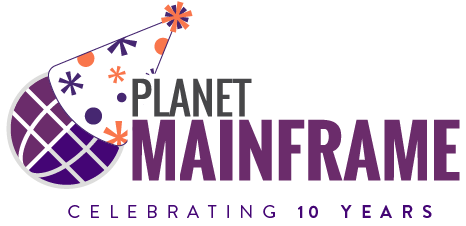Mainframe IT professionals always get excited when IBM announces a new version of its stalwart mainframe z Systems platform. And on July 17, 2017 IBM announced its latest and greatest mainframe hardware, dubbed the IBM z14. Coming more than two years after the IBM z13, the previous major upgrade z System upgrade, IBM is bolstering the platform with a slew of useful new and improved capabilities.
IBM is touting the capabilities of the z14 as being able to deliver additional value to the customer via continuous hardware and software innovation. Mainframe customers look to the new capabilities of a new hardware release to help plan their future capacity requirements so it is vital that existing customers understand the benefits of the new machine. But IBM is shooting higher with the z14; whereas most new mainframe rollouts focus on improving the experience for the installed base, the z14 is also targeting new installations.
Let’s examine the z14 in terms of the four qualities outlined in the title of this piece – security, flexibility, power and analytics – and see how each helps to further the goal of satisfying existing users while trying to lure new ones.
Security
The IBM z14 provides Pervasive Encryption, making the platform one of the most secure hardware offerings available. Specialized cryptographic hardware is utilized to encrypt data and protect encryption keys, enabled through integration with a tamper-responding cryptographic HSM.
The IBM z14 pervasively protects all application and database data, without interrupting business applications and operations, all the time, at any scale. True end-to-end data protection is provided for all in-flight network data and APIs. Imagine being able to protect all your data and applications without requiring IT or programmer action. With the z14 this becomes reality instead of imagination.
This move is a clear indication that IBM is working hard to attract new customers to the mainframe with the z14. A platform with end-to-end protection has clear benefits for organizations with stringent security requirements, significant compliance needs (such as GDPR compliance), or for any company looking to improve the security of their operations or comply with new or existing industry and governmental regulations.
With Pervasive Encryption, IBM is positioning the IBM z14 as a powerful platform for blockchain services. At the same time as this announcement, IBM also announced that it was opening six IBM Cloud Blockchain data centers (in Dallas, London, Frankfurt, Sao Paolo, Tokyo and Toronto) with IBM z as the encryption engine.
With the increasing acceptance of blockchain applications and their integration into core business processes, security, encryption, and resiliency become more important. IBM will bring the IBM z onto the IBM Cloud, initially as an encryption engine for cloud services and to run IBM Blockchain services with the comprehensive cryptographic hardware support provided by IBM z14. “The powerful combination of IBM z encryption and secure containers differentiates IBM Blockchain services on the cloud by supporting the trust models new blockchain networks require,” said Marie Wieck, general manager, IBM Blockchain. “Enterprise clients also benefit from the ease of use making management transparent to the application and the user.”
With the IBM z14 Pervasive Encryption becomes the new standard, with 100% encryption requiring zero application changes and no impact to SLAs.
Flexibility
IBM also announced more flexible pricing options to make it easier for customers to affordably adopt and utilize the IBM z14 for any type of workload that needs to be run. Dubbed Container Pricing and comprising three new models, customers can identify workload to containers and pay for them independently of any other workload at a reduced price.
Container Pricing is an important breakthrough for mainframe customers because it offers competitive economics versus alternative platforms such as public clouds and on-premises x86 servers.
“How so?” you may ask.
Customers define containers to Workload Manager (WLM). A container can be an LPAR, or it can consist of multiple LPARs or portion of an LPAR. Furthermore, customer can change the container size as needed.
The three options for Container Pricing are:
- Application Development and Test Solution (DevTest)
- New Application Solution
- Payment Solution
The DevTest solution provides an option for bringing development and testing workload back to the mainframe. Why is this important? Well, historically development and productions workloads are charged the same way on the mainframe. As such, many customers have moved testing off the mainframe to reduce cost. But doing so can cause issues because of platform compatibility. This new solution permits customers to triple the capacity of all their development and testing environments on z/OS with no increase in monthly license charge. Development and testing is defined as “not production.”
The New Application Solution provides an option for co-locating new workloads with existing workloads but paying a reduced amount for the new workload without impacting existing workload capacity or billing. The container size defined for the new application sets the billing for all capacity-priced IBM software; licensing is only to the container size. New is defined as anything new purchased or written and modernized workloads.
The final Container Pricing model is designed for Payment systems. In this case, pricing is based on the business metric of payments volume processed, not the available capacity. Traditionally, to process a payment requires a combination of online and batch processes to complete. Modern business has driven the time to completion for a payment from 24 hours or longer to as little as ten seconds. This makes the workload extremely spikey. In many cases, capacity as a metric breaks down because of the massive amount of capacity that must be provisioned to meet new payment processing demands. Instead, with the Payment Solution, the customer defines all the processes that comprise a payment and a new MLC-based metric enables the client to pay by the payment (which can be as low as a quarter of a cent per payment).
The new pricing models are enabled with z/OS 2.2 and 2.3 and it ships in the 4th quarter of 2017. The models will also be made available for customers on the IBM z13. The goal is to open up the mainframe for all manner of workload, especially CPU intensive workloads requiring security and protection at a reasonable price.
Powerful
Power is the third aspect of the IBM z14 announcement. The IBM z14 delivers more processing power and enhanced I/O capabilities over its predecessor, the IBM z13. It increases the performance of the individual PUs (processor units), increases the number of PUs per system, redesigns the system cache, increases the amount of memory possible, and introduces new I/O technologies.
The system is capable of running more than 12 billion encrypted transactions per day on a single system. And the IBM z14 delivers industry leading scale to meet the needs of modern connected workloads. It can run a million Docker containers on single platform. IBM also has documented the world’s largest MongoDB instance at 17TB.
The IBM z14 features the industry’s fastest microprocessor, running at 5.2GHz, and a new scalable system structure that delivers up to a 35 percent capacity increase for both traditional and Linux workloads, compared to the previous generation z13.
z14 servers are offered in five models, with 1 – 170 configurable PUs. Models M01, M02, M03, and M04 have up to 41 PUs per CPC drawer, while M05 (the high-capacity model) has four processor (CPC) drawers with 49 PU per drawer. Model M05 is estimated to provide up to 35% more total system capacity than the z13 Model NE1, with the same amount of memory and power requirements.
The system supports up to ten active cores (PUs) per chip running at 5.2 GHz (as compared to 5.0 GHz for the IBM z13). An IBM z14 can be configured with up to 85 LPARs. Memory-wise an IBM z14 can support up to 32 TB for the system and up to 16 TB per LPAR.
And these are just the highlights. There are many additional, powerful improvements made to the IBM z14 including new zHyperLink technology, new instructions for SIMD, improved instruction execution bandwidth, and more.
Analytics
The fourth aspect of the IBM z14 is its ability to offer a superior platform for analytics & machine learning for continuous intelligence across the enterprise.
The Machine Learning on z platform, announced earlier this year, delivers an agile machine learning solution that enables customers to convert enterprise data into opportunity. The IBM z14 offers a superior platform for optimizing your decision process by quickly training, deploying and continuously monitoring a high volume of high quality predictive behavioral models. The IBM z14 can also rapidly analyze large volumes of data with consistent response times by exploiting the additional memory and faster processors of the z14.
With the Pervasive Encryption of the z14 you can securely and efficiently access encrypted data in-place, minimize data movement and reduce development time for predictive behavioral models. Why move the data off the mainframe where it lives? Especially when the IBM z14 makes it possible to securely, efficiently, and cost-effectively process the data right there on the mainframe. You can leverage a zero latency, hybrid platform to provide flexible scalability with deployment options to best match your organization’s requirements.
Furthermore, the IBM z14 is optimized for intelligence and insight. It boasts 50 new instructions optimized for Java and delivers 1.5x faster Java on IBM z than alternative x86 platforms. Pause-less garbage collection is built into the processor, reducing pause times by up to 10x for predictable high-performing transaction processing at-scale. And with up to 32 TB of memory available, it is possible to efficiently process huge amounts of information for real-time business insights.
The Bottom Line
The IBM z14 provides a robust platform for improving the security, flexibility, power and analytical capabilities of your organization. It offers key new capabilities for existing customers to improve their current workloads and bolster their digital transformation journey. And with its support of new technologies, several new pricing models, as well as compelling new security features, the IBM z14 may also attract new customers to the platform.
With superior security and data protection capabilities, fast processing capabilities, lots of memory, and low latency storage the new IBM z14 is the ultimate platform for your new workloads. The new pricing models can also make new mainframe applications very cost effective. Delivering mobile computing, FinTech and big data technologies and applications using the IBM z platform can be the best combination to ensure your successful digital transformation.
With the new IBM z14, IBM is truly ushering in a new era of mainframe computing.









0 Comments